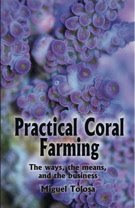 Make something original this holiday season and impress your family and friends with your worldly tastes.
Make something original this holiday season and impress your family and friends with your worldly tastes.Jumping Jubilee
Edible crickets can be purchased from great places like at Fluker's Farm or Bassett's Cricket Ranch.
1 cup cleaned crickets
2 cups water
1 tsp. salt
1/2 tsp. sage
2 dashes pepper
1 Tbsp. butter
2 Tbsp. onion finely chopped
Place ingredients in a medium sized saucepan.
Bring to a boil and allow to simmer for 30 minutes or until tender.
Set aside.
Then combine in a large bowl :
1 1/2 cups mayonnaise
1/3 cup lemon juice
1/4 cup sugar
1/2 cup sour cream
1 large red onion (thinly sliced)
2 Tbsp. dill
1/4 tsp. salt
Add in:
1 1/4 cup of cricket mix
1 can shrimp
And enjoy!
this recipe is from SaveNature.Org
Eating insects isn't as unusual as you might think. Grub, grasshoppers and more are enjoyed around the world by various cultures.
Here's a few facts you might not have known:
- In Australia a famous aboriginal edible insect is the witchetty grub, which is a cossid moth's larva commonly found in the roots of a witchetty bush.
- The Tenryu River of Japan is where the most delicious Zaza-mushi, aquatic caddis flies larvae, can be found and is worth $40 a pound
- Remember that worm in your tequila? Maguey worms, Giant skipper moth larva, feed on agave plants (what tequila is made of) and the worm's body can only be preserved at 140 proof or more, so that worm is proof of a really good bottle of tequila.
- Masinya, palm worms, are a delicacy of Uganda and can only be found on the Ssese Islands where the mirche palm, its host, is abundant
- In the United States a candy company called, HotLix, is slowly mainstreaming insects into the American diet with popular items such as Cricket Lick-It lollipops and InsectNsides chocolate covered scorpians.
Resource:
Menzel, Peter and D'Aluisio, Faith. Man Eating Bugs: The Art and Science of Eating Insects. A Material World Book. Ed. Charles C. Mann. Berkeley, California. 1998






No comments:
Post a Comment